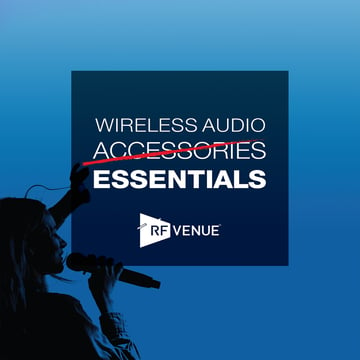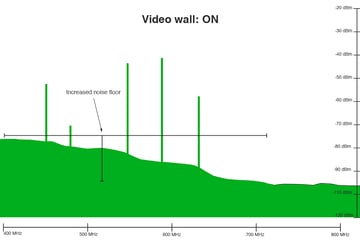- Products
- All Products
- RF PA Extension Kit
- Wireless Microphone Upgrade Packs
- In-Ear Monitor Upgrade Packs
- Wireless Microphone Antennas
- Wireless In-Ear Monitor Antennas
- Antenna Distribution for Microphones
- Antenna Combiners for In-Ear Monitors
- Multi-Zone Antenna Combiners
- Spectrum Tools
- Accessories, Cables and Parts
- Solutions by Venue
- Resources & Training
- Performance Tools
- About Us
Gee, I didn’t know that!
Some topics we hear about all time.
.jpg?width=1500&name=I%20didn't%20know%20that%20BLOG%20(1).jpg)
What's the difference between Active and Passive antennas?
I know, Active sounds better than Passive and more sounds better than less. But with radios, most often, the exact opposite is true. Active antennas are merely passive antennas that have built-in amplifiers intended to make up for loss from long coax runs. Contrary to what some may think, they do not extend range.
And while some active antennas provide for switchable gain, for the most part, their amplifiers are always active. This means additional noise and distortion, although small, will always added. Even when the gain is set to zero, some active antennas are still running the signal through the amp which means noise and distortion are still being added. Active antennas and/or in-line amps should only be used as a last resort to mitigate extreme coax line losses. Usually a better choice is to use higher quality, lower loss coax. If there is any question, your best bet is to start with a passive antenna and simply add an in- line amp if necessary.
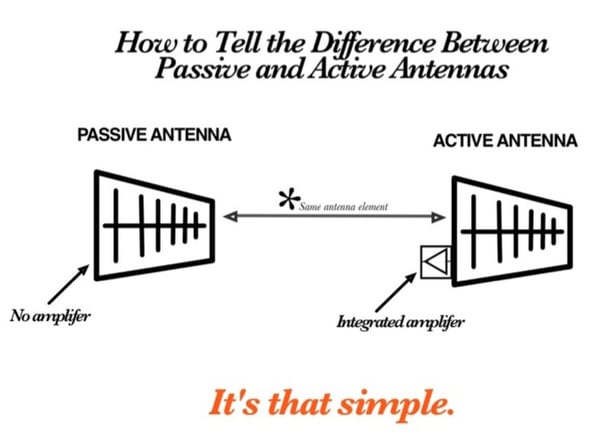
What is the difference between Analog and Digital RF?
RF is RF in either case. What is different is the modulation scheme of the signal. The power of analog signals changes with level but, because digital is transmitting 1s & 0s, it is essentially always full strength modulation. So feel free to mix analog and digital units on the same antenna (but you should leave a bit more space between their frequencies).
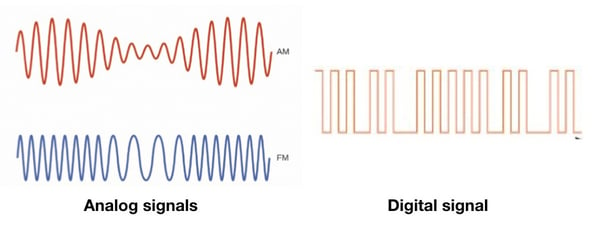
Will this brand receiver work with that brand antenna?
With very few exceptions most antennas, distros, coax, filters, etc. are not brand specific. For the most part you simply need to choose equipment that operates in the frequency band and power levels of your radios. No problem to have multiple brands connected to the same distro.

Must antennas be matched or symmetrical?
There is no inherent need for symmetry when using antennas. Antennas should be chosen for the job at hand. And that could mean using a whip and a paddle antenna as a diversity pair. You will, of course, get different results from different antennas but that is not necessarily a bad thing. In some cases, as in our Diversity Fin antenna, the asymmetry produces better results. The Diversity Fin is designed with two different antenna styles with two different gain factors and we have found that this almost always results in fewer multi-path problems indoors.
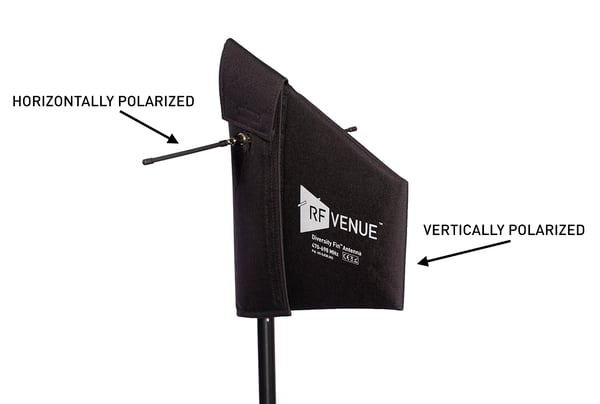
Can I use the same antenna for both transmitting and receiving?
This is called “reciprocity”. For passive antennas the receive and transmit properties of are identical and the radiation patterns will also be the same. If active antennas are being used you will have to take into account the properties of the amplifiers. A good example is our CP Beam antenna which is commonly used for superior IEM performance and also long distance reception for wireless mic receivers. If you are a rental company you can send the same CP Beam out for either job.

Do coax cables need to be matched lengths?
Coax cables do not need to be the same length. With two sides of a diversity system, things will be different on both sides of your A&B pair anyway. As long as there is sufficient signal in both halves, your receivers should be able to handle this. As always, the best practice is to keep the coax runs as short as practical, don’t kink the cable and protect it from foot traffic and handcart pool overs. Don't waste your money buying 2 long cables if a long one and a short one get to where you need them to go.
.jpg?width=500&name=My%20Post%20(1).jpg)
Can I use Bandpass Filters on my IEMs?
If you mean in the path between a transmitter and its antenna, the better question to ask is, why would you want to? You are only transmitting the selected frequency anyway. Band Pass Filters can be a big help in avoiding interference, but remember they are only useful on the inputs to receivers for wireless microphones. They could be of help if there was a way to attach them to the IEM receivers, but no one wants another piece of gear dangling off the belt pack. So let’s just keep them on the receiving antennas for mics. By all means, use bandpass filters to keep your ears out of your mics, but unfortunately, it doesn't work the other way.
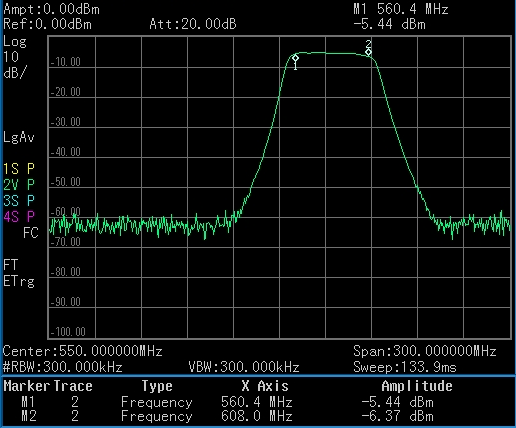
Tag(s):
Don Boomer
Don Boomer is Senior applications engineer at RF Venue. He has worked in R&D in the past for Peavey, Sabine and Line 6 and his rock band from his high school days has a song in the Rock n Roll Hall of Fame
More from the blog
Subscribe to email updates
Stay up-to-date on what's happening at this blog and get additional content about the benefits of subscribing.



